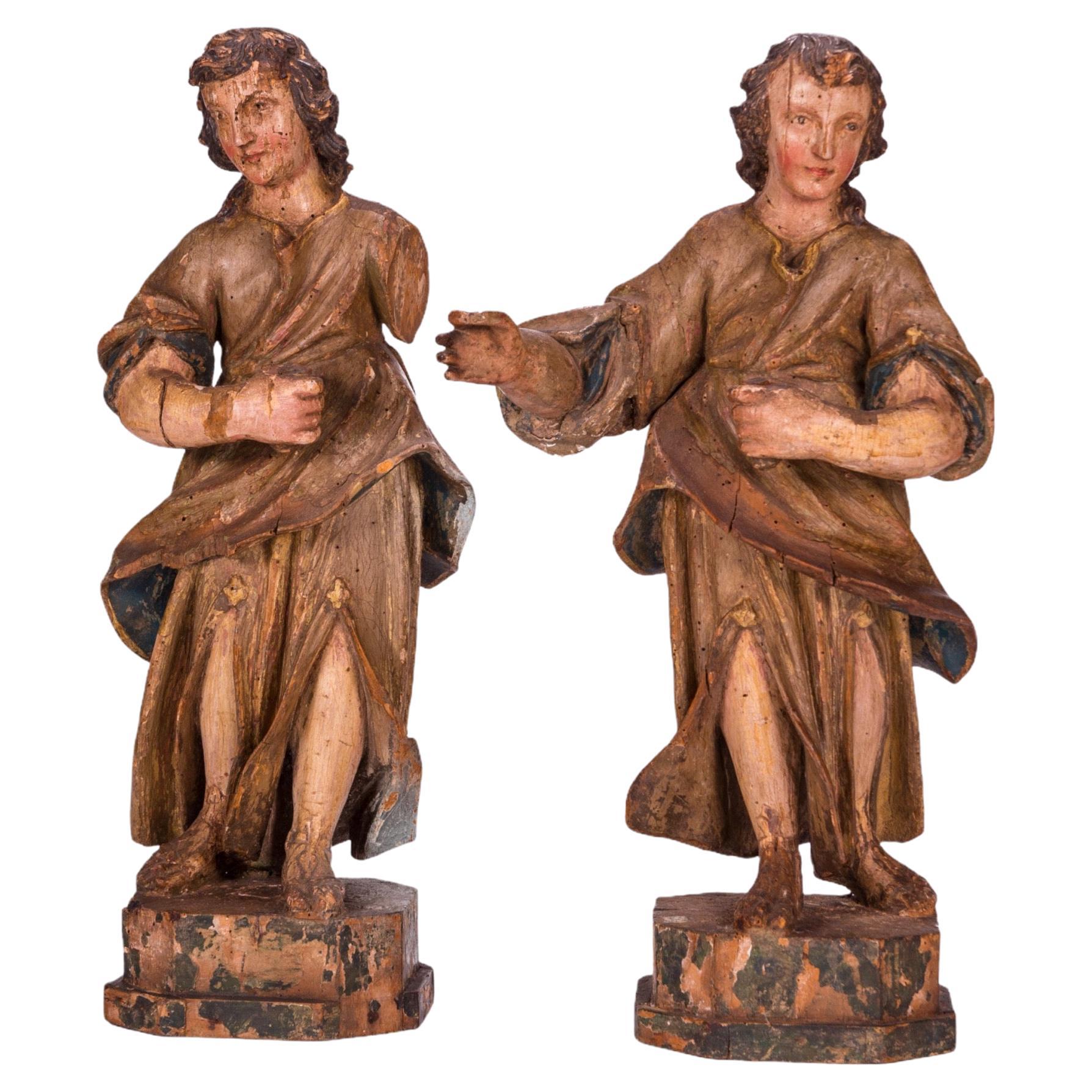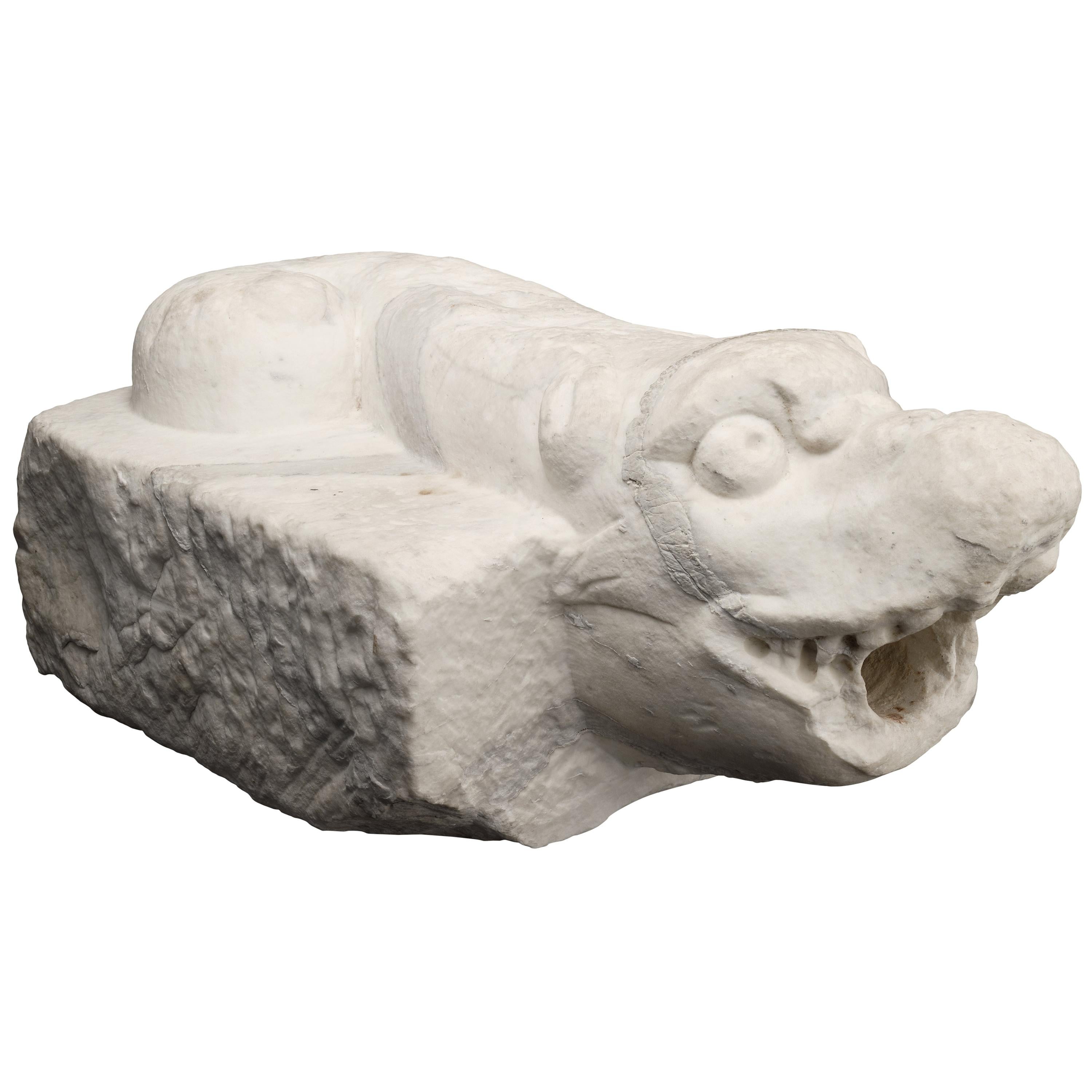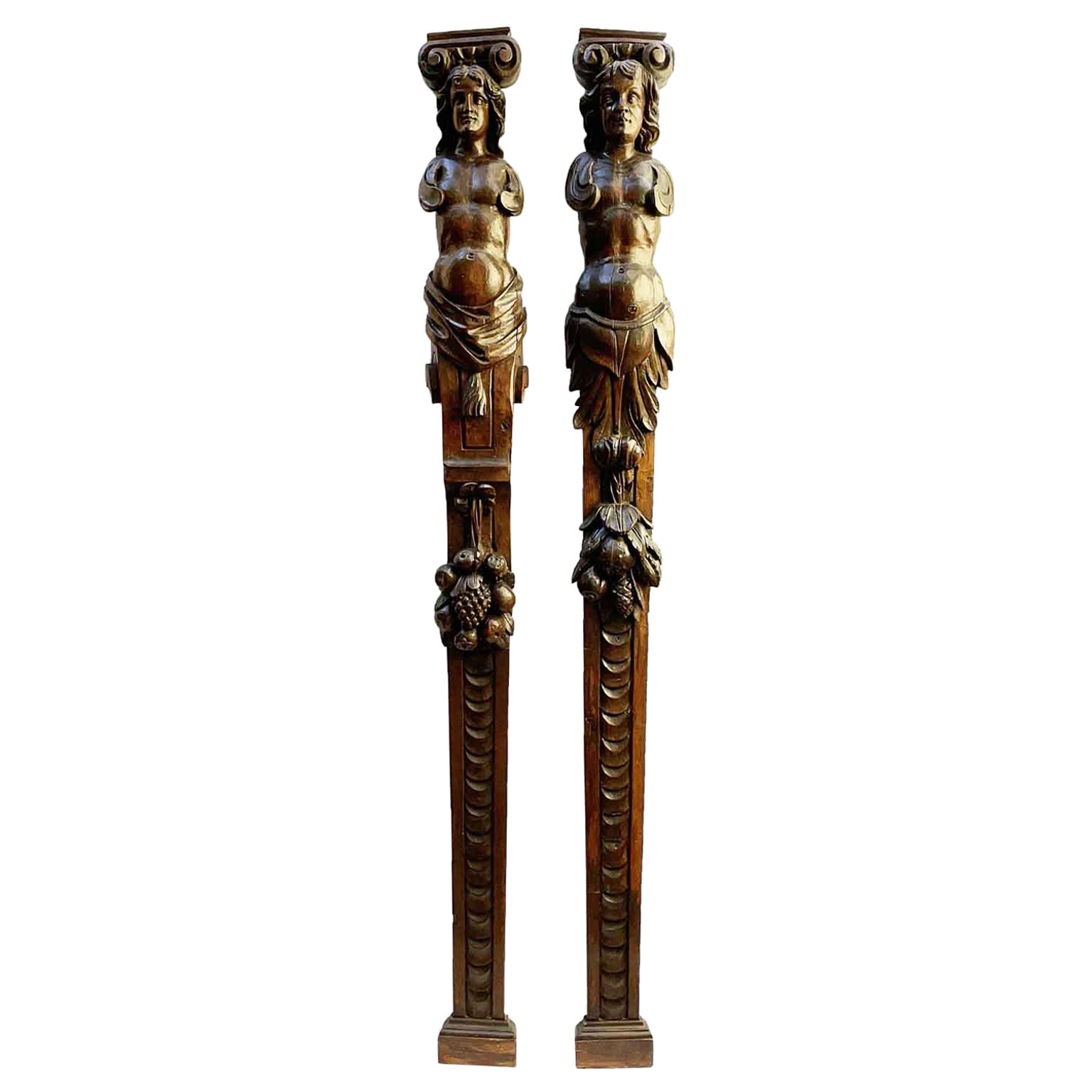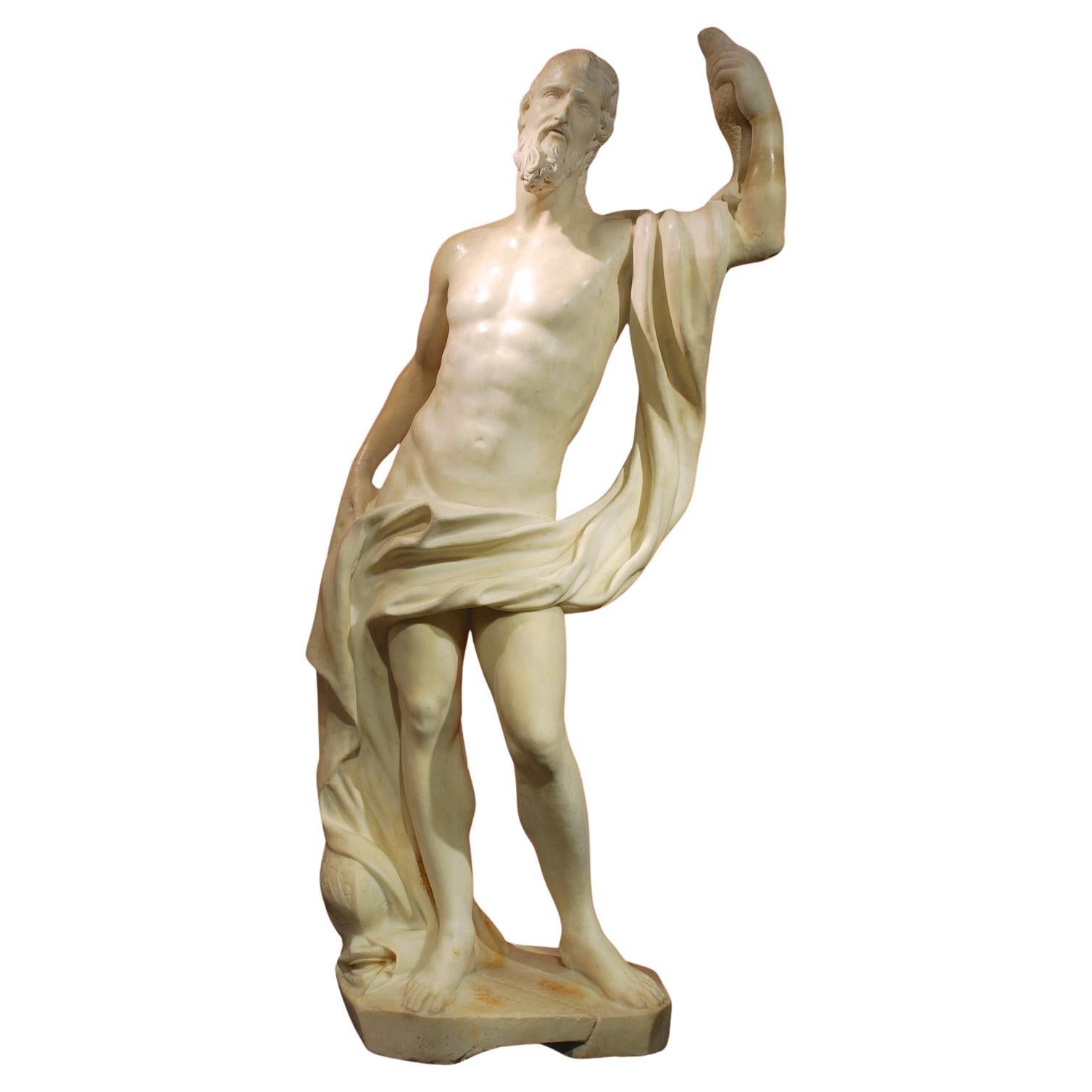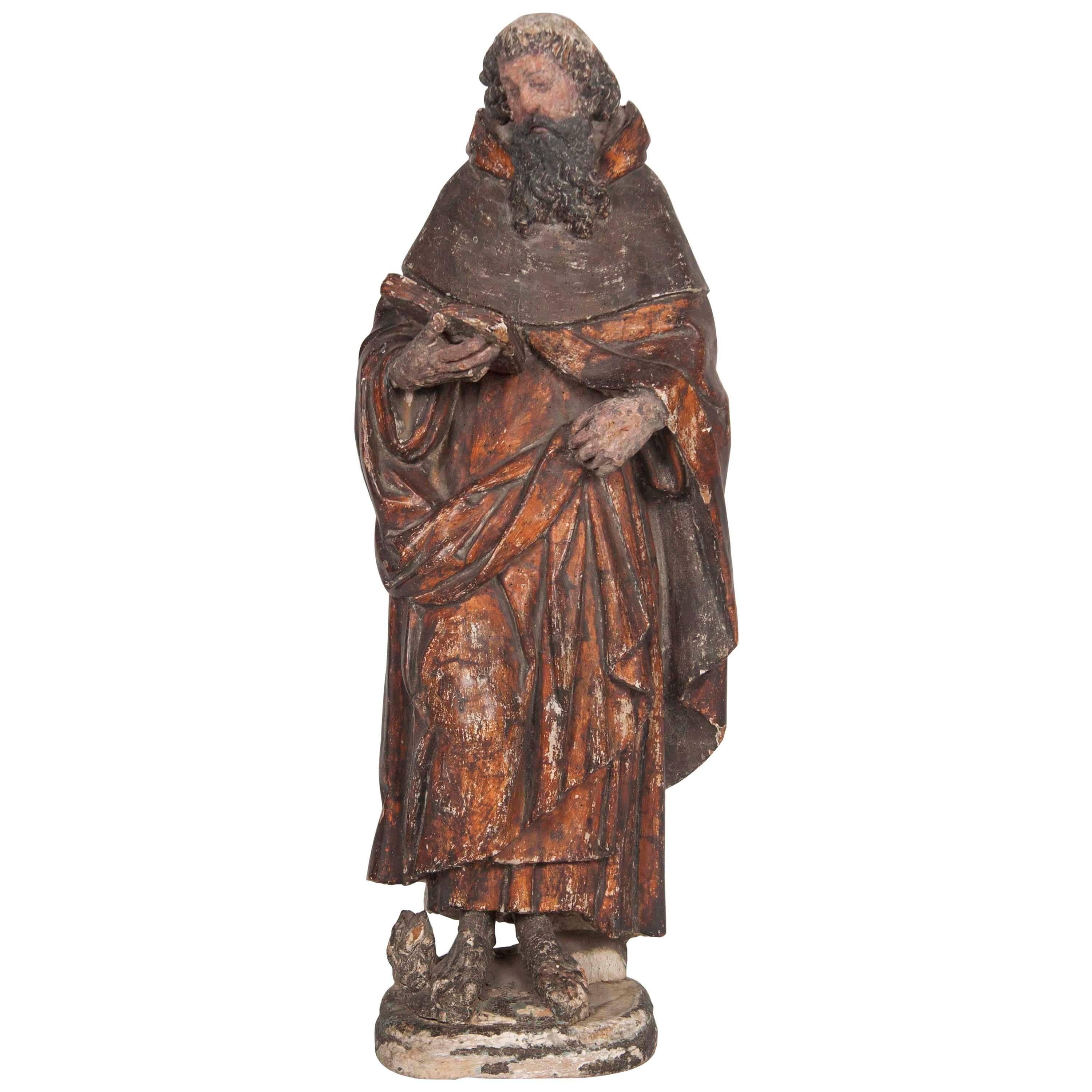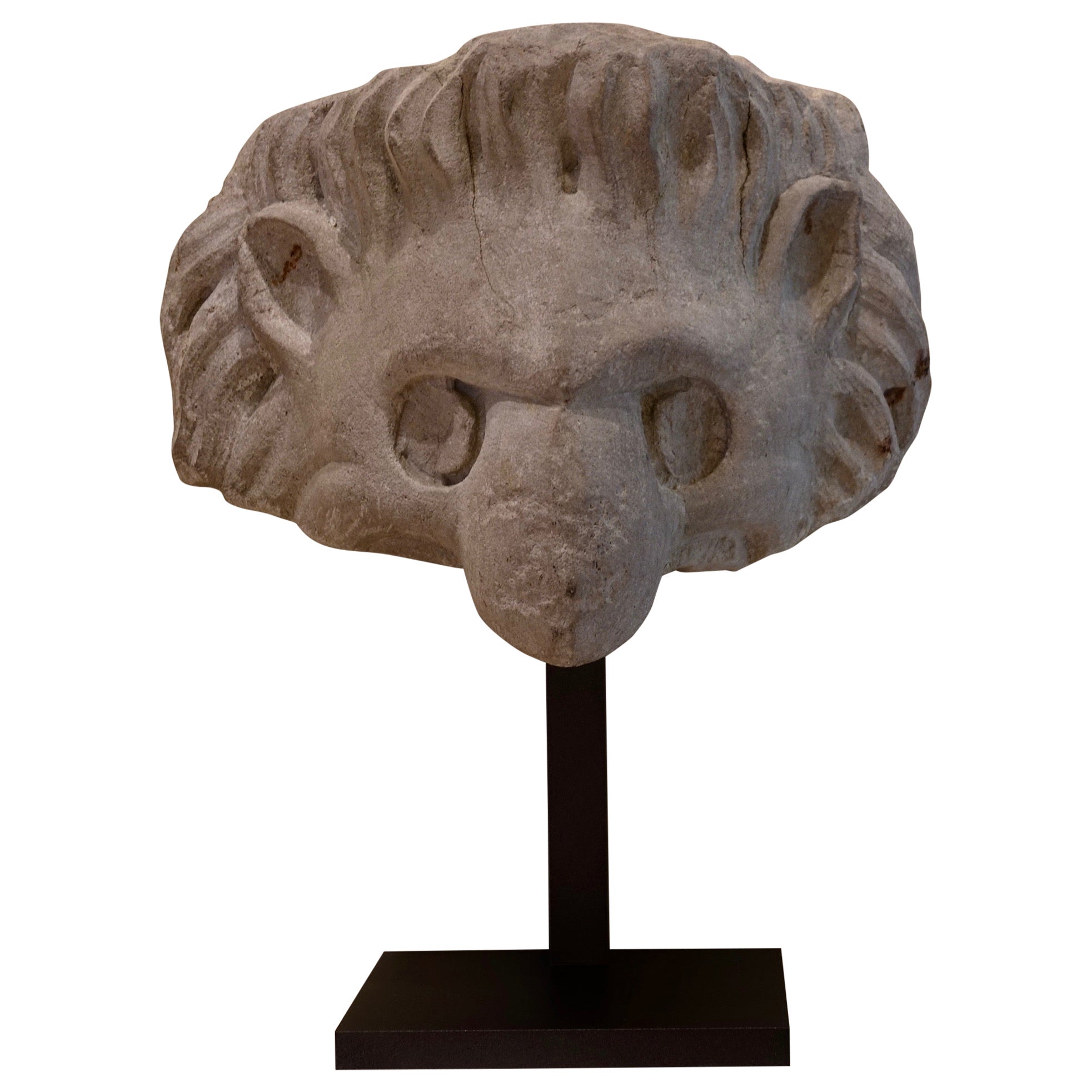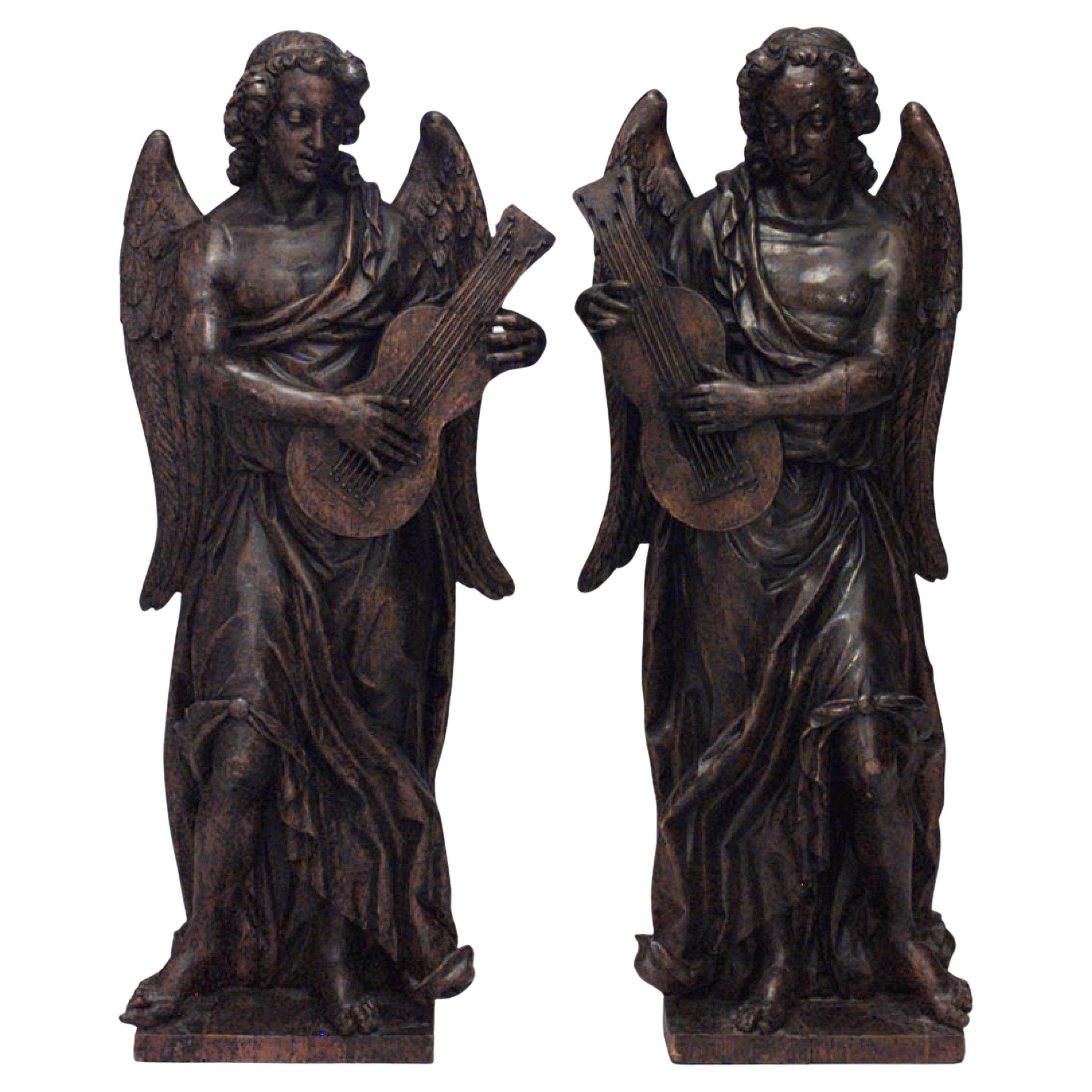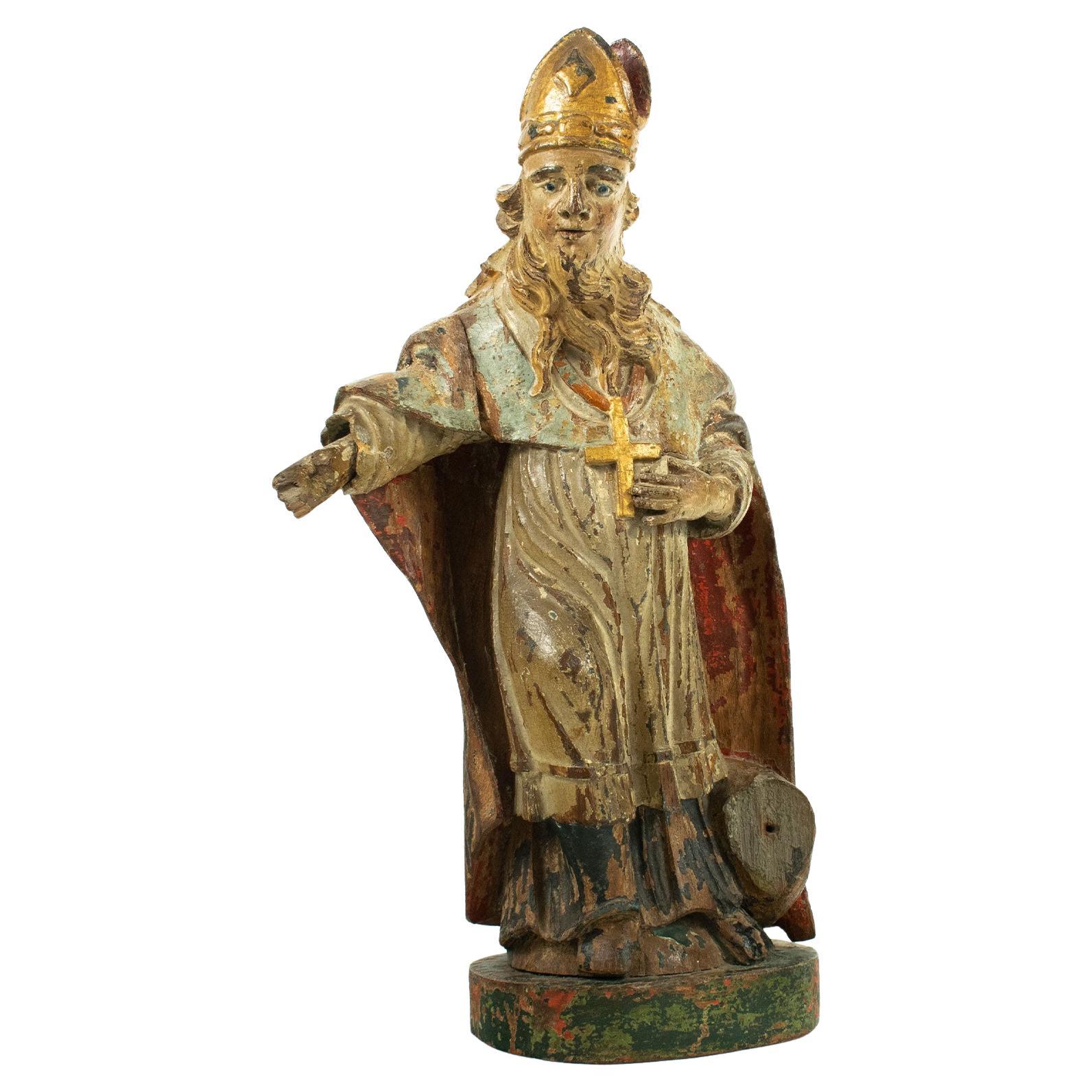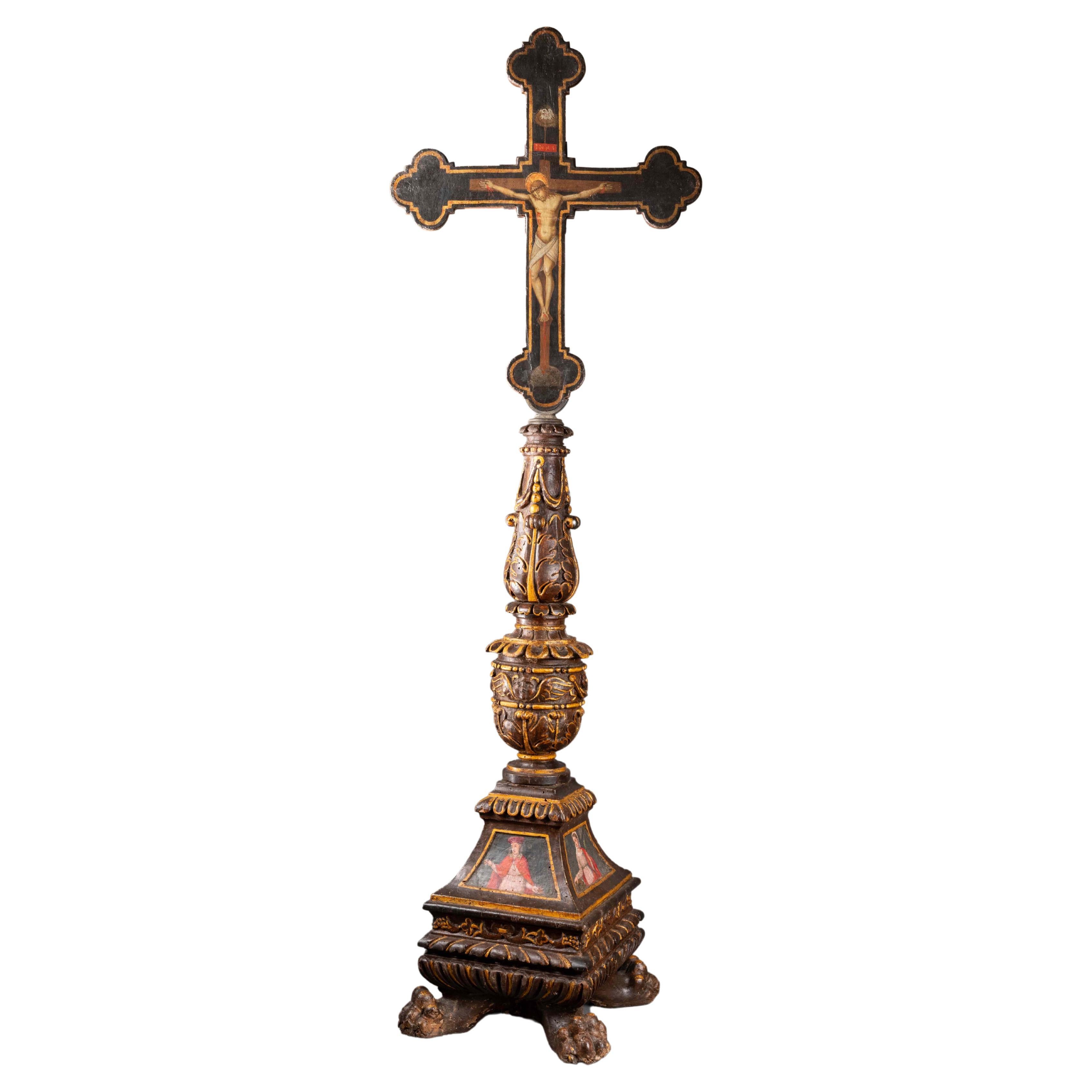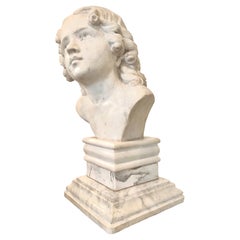
Sculpture Bust Statue, 16th Century Italian Renaissance Marble Angel
View Similar Items
Want more images or videos?
Request additional images or videos from the seller
1 of 13
Sculpture Bust Statue, 16th Century Italian Renaissance Marble Angel
About the Item
- Dimensions:Height: 40 in (101.6 cm)Width: 13.25 in (33.66 cm)Depth: 13.25 in (33.66 cm)
- Style:Renaissance (Of the Period)
- Materials and Techniques:
- Place of Origin:
- Period:
- Date of Manufacture:Unknown
- Condition:Wear consistent with age and use. Minor losses.
- Seller Location:Montreal, CA
- Reference Number:1stDibs: LU3827119585132
About the Seller
5.0
Vetted Seller
These experienced sellers undergo a comprehensive evaluation by our team of in-house experts.
Established in 2010
1stDibs seller since 2018
57 sales on 1stDibs
Typical response time: 4 hours
More From This SellerView All
- Marble Bust of a Young Man, Carrara MarbleLocated in Montreal, QuebecMarble Bust of a Young Man, Carrara Marble.Category
Antique 19th Century French Neoclassical Busts
MaterialsCarrara Marble
- French Marble Bust of Louis XIV, the Sun KingLocated in Montreal, QuebecLouis XIV, known as Louis the Great or Le Roi Soleil (Sun King) was a monarch who reigned as king of France from 1643 until his death in 1715. His reign of 72...Category
20th Century French Neoclassical Busts
MaterialsMarble
- French Giltwood Eagle SculptureLocated in Montreal, QuebecRare French, 19th century, Empire. Large size carved wood and gesso gilt eagle, with its full body, swept back wings, pronounced talons, perched on a ball. Important size. Conditi...Category
Antique Late 19th Century French Empire Animal Sculptures
MaterialsGesso, Wood
- Bronze Elephant on Marble Base, Signed by MiloLocated in Montreal, QuebecBronze elephant mounted on grey marble base. Signed "Milo". Size including base 8.75" H x 14.5" L x 6.25" D. Size of elephant only 8" H x 13" L x 5.5" D.Category
20th Century French Animal Sculptures
MaterialsMarble, Bronze
$1,800 Sale Price25% Off - Regence Parquetry French Commode, Marble Top, 19th CenturyLocated in Montreal, QuebecFrench Regence style commode or chest of drawers, marble-top, 19th century. Diamond-shape parquetry veneer, four front drawers. Carved edges, red Languedoc marble top. Gilt bronze ha...Category
Antique 19th Century French Regency Commodes and Chests of Drawers
MaterialsMarble
- French Louis XV Provencal Style, 19th Century Marble-Top Console TableLocated in Montreal, QuebecFrench Louis XV Provencal style, 19th century marble-top console table. The richly sculpted, hand-carved wood base is supported by a graceful single cabriole leg. This wall console i...Category
Antique Early 19th Century French Louis XV Console Tables
MaterialsMarble
You May Also Like
- Angelic Carved Wood Sculptures, 16th CenturyLocated in North Miami, FLPair of 16th Century Italian carved polychromed angelic sculptures.Category
Antique 16th Century Italian Renaissance Figurative Sculptures
MaterialsGold Leaf
$9,375 Sale Price / set25% Off - Italian Ancient Marble Sculpture Fountain, Late 16th CenturyLocated in Milano, ITSea monster Carrara marble mouth fountain Italy, late 16th century It measures 13.8 x 31.5 x 18.9 in (35 x 80 x 48 cm) State of conservation: some small evident gaps and widespread signs of wear due to outdoor exposure. The gray marks crossing it do not come from restoration, but are rather the natural veins of the marble. This work has some morphological characteristics typically associated with the iconography of the sea monster: an elongated muzzle, sharp teeth, protruding eyes, elongated ears, and a coiled serpent's tail. An in-depth series of studies on artistic depictions of the sea monster attempted to verify how this symbol evolved in antiquity in the European and Mediterranean contexts and how it gradually changed its image and function over time. The iconography itself is mutable and imaginative and its history is rich with cultural and artistic exchange, as well as the overlapping of ideas. This occurred so much that it is difficult to accurately pinpoint the "types" that satisfactorily represent its various developments. However, we can try to summarize the main figures, starting from the biblical Leviathan and the marine creature that swallowed Jonah (in the Christian version, this figure was to become a whale or a "big fish", the “ketos mega”, translation of the Hebrew “dag gadol”). Other specimens ranged from the dragons mentioned in the Iliad (which were winged and had legs) to "ketos” (also from Greek mythology), the terrifying being from whose Latinized name (“cetus”) derives the word "cetacean". See J. Boardman, “Very Like a Whale” - Classical Sea Monsters, in Monsters and Demons in the Ancient and Medieval Worlds, in Papers presented in Honor of Edith Porada, Mainz am Rhein 1987, pp. 73-84). In Italy the monster underwent yet further variations: it can be found in Etruscan art on the front of some sarcophagi representing the companion of souls, while among the Romans we find the “Pistrice” (cited by Plinio in Naturalis Historia PLIN., Nat., II 9, 8 and by Virgilio in Eneide: VERG., Aen., III, 427), which appeared in the shape of a stylized hippocampus or a very large monstrous cetacean and evolved into a hideous being with a dragon's head and long webbed fins. During the Middle Ages, the sea monster was the object of new transformations: at this time, it is often winged, the head is stretched like a crocodile, the front legs are often very sharp fins - sometimes real paws - until the image merges with dragons, the typical figures of medieval visionary spirituality widely found throughout Europe (on this topic and much more, see: Baltrušaitis, J., Il Medioevo fantastico. Antichità ed esotismi nell’arte gotica, Gli Adelphi 1997). In Italy during the 15th and 16th centuries, the revival of classicism - representative of the humanistic and Renaissance periods - led to a different reading of these "creatures". Indeed, the sea monster was also to find widespread use as an isolated decorative motif, especially in numerous fountains and sculptures where dolphins or sea monsters were used as a characterizing element linked to water (on this theme see: Chet Van Duzer, Sea Monsters on Medieval and Renaissance Maps, London, The British library, 2013). From the morphological point of view, the "sea monsters" of this period are mostly depicted as hybrid figures, in which the body of a mythological or real being (a hippocampus, a sea snake, a dolphin), is joined to a head with a rather indistinct appearance. It was usually characterized by large upright ears, an elongated snout, sharp teeth and globular, protruding eyes; a complex and indefinite figure, both from the symbolic point of view and from that of its genesis. The work we are examining is placed as a cross between the medieval sea serpent and the Renaissance dolphin, with stylistic features which recall the snake as often used in heraldry (such as the "snake" depicted in the coat of arms of the Visconti - the lords and then dukes of Milan between 1277 and 1447 - and which, for some, may be derived from the representations of the “Pistrice” that swallowed Jonah). In the search for sources, Renaissance cartography and in particular woodcuts should not be neglected. See for example the monsters of Olaus Magnus, from the editions of the “Historia de gentibus septentrionalibus” (“History of the peoples of the north”) and the natural histories of Conrad Gesner, Ulisse...Category
Antique 16th Century Italian Renaissance Animal Sculptures
MaterialsCarrara Marble
- 16th Century Renaissance Pair of Italian Wall Sculptures Caryatids OversizedLocated in Milan, ITUnique pair of Italian hand-carved caryatids, dating back to 1500 circa, almost 83 inches 210cm high, this antique pair of dark patina Renaissance sculptures comes from a choral ense...Category
Antique 16th Century Italian Renaissance Wall-mounted Sculptures
MaterialsWood, Walnut
- A 16th century carved marble sculpture of poseidonLocated in London, GBThis fine and imposing sculpture is an excellent example of 16th century Italian craftsmanship. The figure is stood on a raised, shaped rectangular base with a carved "dolphin" at th...Category
Antique 16th Century Italian Renaissance Figurative Sculptures
MaterialsMarble
- 16th Century Italian Renaissance Carving of a Male SaintLocated in Stamford, CT16th century Italian carved and polychromed figure of a male saint or prophet with a wonderful presence. Shown holding an open book in his right hand with flames at his feet, mid-16t...Category
Antique 16th Century Italian Renaissance Religious Items
MaterialsWood
- 16th CENTURY MARBLE SCULPTURE OF A YOUNG HERCULESLocated in Firenze, FISplendid sculpture in white Carrara marble depicting a young Hercules holding the world. Originally, the work was conceived to be used as a caryatid at the beginning of a sumptuous m...Category
Antique 16th Century Italian Renaissance Figurative Sculptures
MaterialsCarrara Marble
Recently Viewed
View AllMore Ways To Browse
Angel Bust Marble
Marble Roman Foot
Vintage French Sculpture
Marble Sculptures Of Antiquity
Wood Ribbon Sculpture
Bavarian Model
Woman Holding Baby
French Bronze Figure Of The Apollo
Death Of Cleopatra
Allan Stone Gallery
Love Falconet
Bronze Nude On Rug
Antoine Vechte
Dresden Volkstedt Porcelain
German Dresden Volkstedt Porcelain
Hummel Goose Figurine
Ceramic Vienna
Italian Giltwood Cherub
